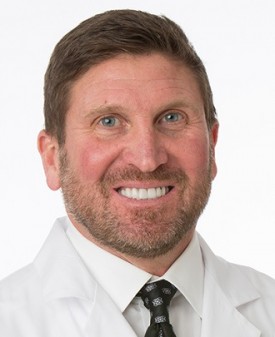Optimizing RCM During Value-Based Reimbursement Transition
With revenue coming from fee-for-service and value-based reimbursement models, providers should adopt technology that can adapt and grow to their revenue sources, a provider explained.

Source: Thinkstock
- Value-based reimbursement revolutionized how providers get paid for care delivery. However, the slow push away from fee-for-service payments has challenged providers looking to optimize healthcare revenue cycle management.
To advance healthcare revenue cycle management during the transition, providers should look for vendors and solutions that cater to both fee-for-service and value-based reimbursement reporting, advised Mitchell B. Hollander, MD, Co-President of Michigan Institute of Urology.

“Do they have the technology, the teams, and the processes to operate either in a fee-for-service model, in terms of revenue, and from a value-based care perspective,” he recently told RevCycleIntelligence.com.
“Are they going to be set for the future in that space, so they can assist us to grow to be more efficient if we take at-risk contracts or engage with alternative payment models, which we are currently doing?”
During the time of transition, healthcare providers receive revenue from both value-based reimbursement and fee-for-service models. About one-quarter of healthcare payments in 2016 stemmed from an alternative payment model, the Healthcare Payment Learning & Action Network reported.
READ MORE: After EHR Adoption, Revenue Cycle Technology Modernization Begins
Providers received the remaining payments from a fee-for-service arrangement. Although many anticipate upping value-based reimbursement revenue in the next year.
A recent AMGA survey revealed that 77.3 percent of commercial revenue came from a fee-for-service structure in 2016. But providers estimated that roughly half of their revenue will be value-based by 2018.
With value-based reimbursement slowly dominating healthcare revenue, the demand for technological solutions that support the new payment structure increased. For example, value-based and risk-based reimbursement contracts drove the development and implementation of population health management tools, a 2016 Frost & Sullivan report stated.
As a result, the population health management marketplace will grow by 284 percent over the next five years, accounting for a compound annual growth rate of over 30 percent.
However, solutions that emphasize value-based reimbursement support may be ignoring almost three-quarters of provider revenue.
READ MORE: Best Practices for Value-Based Purchasing Implementation
Leaders at Michigan Institute of Urology acknowledged the tension between improving fee-for-service management while moving to value-based reimbursement. They turned to the Integra Connect tool.
Hollander explained that the organization strived to implement a revenue cycle management solution that increased fee-for-service efficiency. By improving fee-for-service management, he aimed to also support value-based reimbursement adoption.
To support both payment structures, the Michigan-based organizations needed enhanced reporting capabilities.
“When Integra Connect is fully integrated into our system, our fee-for-service, which is just old school medicine, will be much more efficient,” he said. “Take denials management as an example because we have to go through pre-authorization, then we do the procedure, and then find we are not getting paid appropriately.”
He added that his organization was using up to ten full-time employees to work on handling prior authorizations and resulting claim denials. A recent MGMA survey uncovered that 86 percent of providers reported an increase in prior authorization requirements since 2016.
READ MORE: Exploring Two-Sided Financial Risk in Alternative Payment Models
The increasing volume of procedures and items requiring prior authorizations in the last ten years challenged Michigan Institute of Urology’s workflow and revenue capture. While the urology practice is a large healthcare organization, smaller medical groups are especially feeling the pressure.
“If you’re a small group, you can’t afford to do that,” he stated. “It’s not possible. You’ll end up joining either a larger group or hospital.”
However, the reporting capabilities offered through a fee-for-service and value-based reimbursement solution supported both payment models. Hollander and his providers gained insight into claims denial management under fee-for-service while positioning themselves to report quality and cost performance under alternative payment models.
Integrating providers and systems to move together toward value-based reimbursement
Unifying providers and health IT systems under one revenue cycle management solution was also a necessary requirement for the Michigan Institute of Urology.
Moving forward with value-based reimbursement, providers in the physician group needed to work together. However, the fee-for-service environment permitted providers to retain their individual practice management processes.
“We have physicians all over the map doing different things… On our technological side, we are all over the map as well.”
Consequently, the group’s technological services appeared as a patchwork of different solutions.
“Our technology is almost a reflection of our physicians,” Hollander explained. “It’s a stretch analogy, but we have physicians all over the map doing different things. Some are doing it manually and some are doing it another way.”
“On our technological side, we are all over the map as well,” he continued. “We have a practice management system that does not serve us properly. We have to use a variety of different companies to support.”
As a result, the urology group partnered with separate EHR, data analytics, database registry, and revenue cycle management vendors. Through an integrated revenue cycle management system, Hollander intended for providers and health IT systems to get on the same page.
“We are saying that we are all going to do it one way and we want it under one heading – this pathway, that pathway, and everybody marches to the same beat,” he said.
Integrating revenue cycle management and an EHR system was particularly important to leaders at Michigan Institute of Urology as they decided on a solution.
“Not only were we interested in the revenue cycle management portion, but the EHR was very meaningful to us,” he stated. “If we could put that together seamlessly with our EHR and our practice management system talking to each other and get rid of all these other companies that we have to deal with, that was a big thing, especially end-to-end integration.”
Hollander and his colleagues are not alone with their EHR and revenue cycle management integration request. A 2016 KLAS survey uncovered that 59 percent of provider organizations were considering a revenue cycle management system replacement in favor of a system that could integrate with their EHR.
Implementing an integrated revenue cycle management and EHR system was particularly key to the specialty practice, Hollander added.
“Epic is just a blank chalkboard and it is okay for the hospitals, but for urology, we want to build a system in which physician X opens a chart and sees a patient for diagnosis of an enlarged prostate, the entire pathway is going to be integrated into the EHR,” he said. “At the end of the visit, you have answered the questions, all your data is entered, and you have followed a pathway. Then, it is automatically billed and that visit is closed immediately.”
Clinical pathways are also critical to healthcare cost savings under alternative payment models that cater to specialty practices. A recent Deloitte survey showed that all interviewed provider groups used a clinical pathway approach as a way to participate in oncology-specific bundled payment models.
“The most important thing at the end of the day is following pathways and giving us the ability to show the stability or instability of our revenue cycle management.”
The clinical pathway method generated significant healthcare cost savings and utilization reductions. Drugs costs declined between 5 and 37 percent and the provider organizations saw 6 to 40 percent less emergency department visits as well as 7 to 36 percent fewer hospital admissions.
The revenue cycle management and EHR system integration also allows Hollander and his team to better monitor revenue capture from patient access to medical billing.
“The most important thing at the end of the day is following pathways and giving us the ability to show the stability or instability of our revenue cycle management,” he said. “We have to do that in order to succeed. We need to precisely know if we’re stable or unstable.”
Implementing a revenue cycle management solution that grows with APM, MACRA adoption
Understanding a physician group’s revenue cycle stability will be critical to alternative payment model adoption, especially if groups aim to earn incentive payments under MACRA.
MACRA’s Quality Payment Program will financially penalize or reward eligible clinicians for quality and cost performance starting in 2019.
Most clinicians will participate in the Merit-Based Incentive Payment System (MIPS) under the program. CMS plans to adjust Medicare reimbursement 4 percent upward or downward based on clinician performance in 2017. The payment adjustment will reach 9 percent by 2022.
Eligible clinicians can also qualify for an automatic 5 percent incentive payment in 2019 by participating in an Advanced Alternative Payment Model under the Quality Payment Program. In lieu of MIPS participation, clinicians who see 20 percent of their Medicare patients or receive 25 percent of their Medicare revenue through an approved risk-based alternative payment model will see the automatic positive payment adjustment.
“If you don’t and you fall below that revenue-neutral line, you are the one getting subtracted from and you are getting subtracted nine or even more percentage points.”
Clinicians who may not be part of physician groups with that many patients can still earn favorable MIPS performance scores by engaging with an alternative payment model.
“I do not think we will meet the threshold number to be excluded from MIPS as it stands right now because it is a high percentage, but the alternative payment model still may help us with meaningful use and other things to take our MIPS payment adjustment above a revenue-neutral line,” he explained.
“We can really do well in the future if we have the right technology and our physicians are doing the right thing, but if you don’t and you fall below that revenue-neutral line, you are the one getting subtracted from and you are getting subtracted nine or even more percentage points,” he added. “You won’t be able to survive.”
To stay above the revenue-neutral line under MIPS, Hollander noted that his physician group needed the reporting skills to understand their revenue cycle management and quality performance.
But the physician group could not succeed under MIPS with just enhanced reporting capabilities, they needed a vendor that was willing to work with them to integrate all aspects of value-based reimbursement.
“The entire team is dedicated to having this seamless, integrated revenue cycle management and EHR system to do our database registry, our analytics, our reporting, and to be able to do those analytics and algorithms going vertically and horizontally so we can report,” he concluded.
“Again, it’s reporting,” he emphasized. “We can’t do that now. We need help, period. We’re planning on Integra Connect to be the one who is going to be our partner and, to that end, we’re hoping to be very successful and hopefully be above the nine percent and even higher.”
